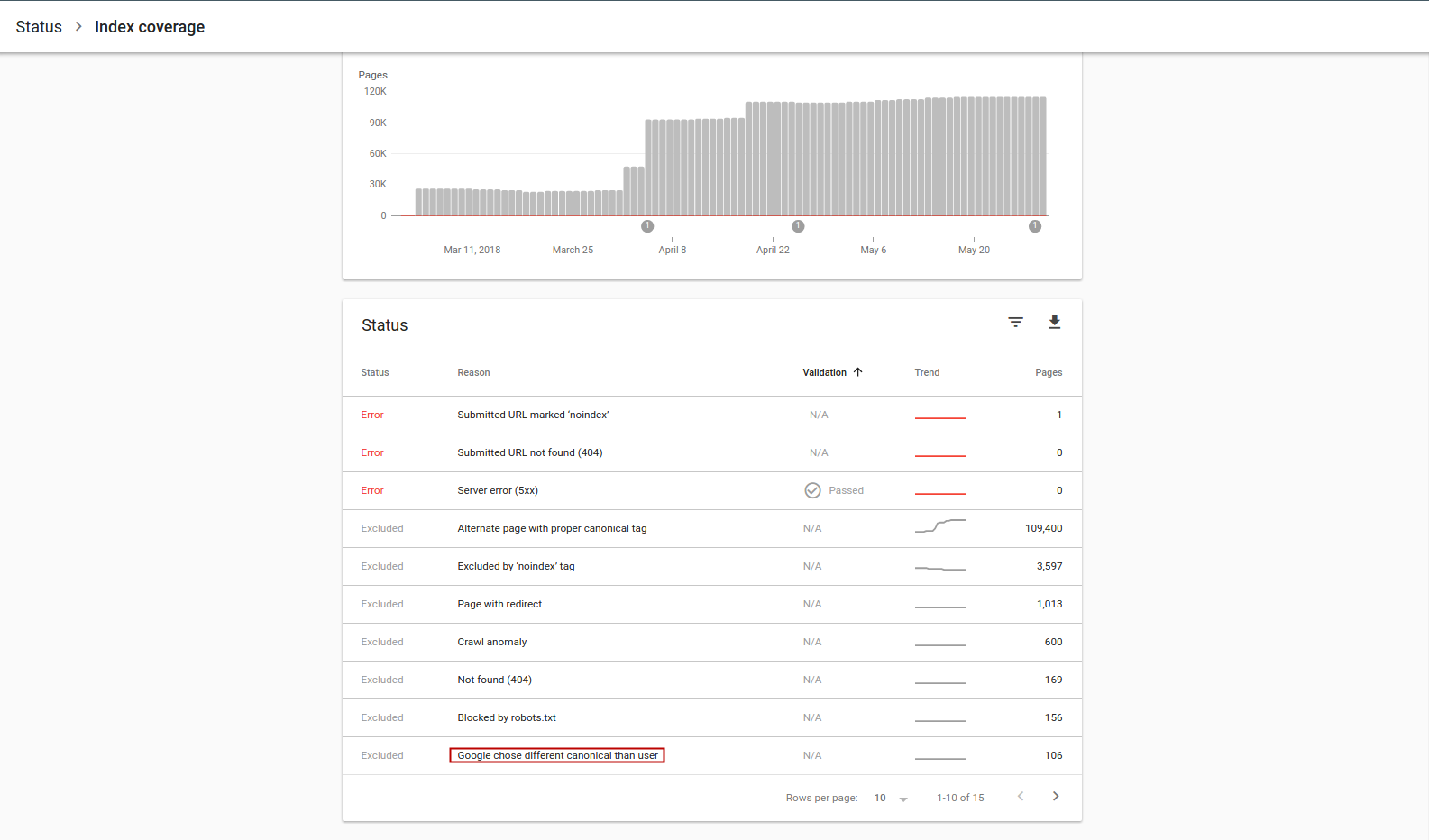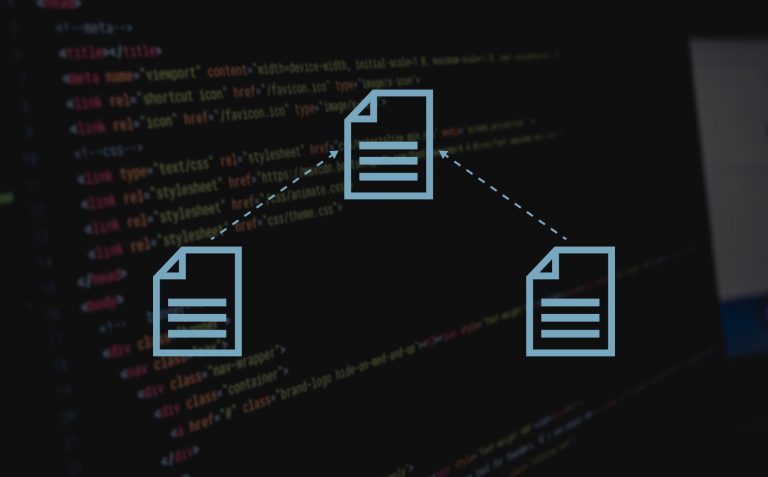The question about the use of rel=”canonical” on the pagination pages often confuses even the experienced search engine optimizers. And the beginner would get lost immediately, without any chance of recovery. Indeed, the Internet is full of conflicting articles and confronted advice. If summing it up, they are as follows:
- use rel=”canonical” meta tag that points to the first page of the category.
https://example.com/category has rel=”canonical” pointing to https://example.com/category
https://example.com/category?p=2 has also rel=”canonical” pointing to https://example.com/category
and so on
- use rel=”canonical” meta tag that points to each pagination page.
https://example.com/category has rel=”canonical” pointing to https://example.com/category
https://example.com/category?p=2 has rel=”canonical” pointing to https://example.com/category?p=2
and so on
*In this article, we only consider techniques related to the use of rel=”canonical”. The options with robots meta tag are the topic for another conversation.
Do not forget about Google recommendations, namely rel=”next” and rel=”prev” directives. In this support article Google insists on using these links to help its crawlers to understand the structure better. Also, it is stated there that Google prefers the second variant – using canonical meta tag for each category page.
What then can you argue at all?
The problem is that Google advices are often found being contradictory. For example, if using the very literal approach for this issue type, we would face hitting another Google claim – not to have duplicated titles and content. Despite Google says that it can recognize pagination pages and to interpret and index them correctly, SEO-teams with experience are used to trust such statements very carefully. And they have all good the reasons for this. Even the correct implementation of rel next & prev does not guarantee you the absence of such a picture:

This fact looks like is speaking in favor of the first approach type. However, no one is assured to be avoiding these warnings, whatever variant of rel=”canonical” meta tag use on the category page you choose. It only proves again, that you still can’t rely on Google on every clause. Why do these “HTML improvements” appear in the Search Console if Google is supposed to understand that pagination pages are… obviously the pagination pages?

What happens when we use own rel=”canonical” on each page of the category (combining it with rel next & prev)?
We use rel=”next” and rel=”prev” to indicate the position of the current page in relation to the neighboring within the navigation unit. We use rel=”canonical” meta tag pointing to itself to tell the search bot that all these pages are preferred for indexing. It is important if we have different structures in the URL parameters (if we use some filters, for example). That is extremely important in different CMS systems, like Magento f.e., that can create thousands of pages for such technical needs.
This approach allows to be sure that every product on even the deepest page will be seen by the search bot and will get indexed. However, we leave it up to Google to decide which of all created pagination pages will be shown in search results. Well, actually it’s always up to Google, despite all rel=”canonical” meta tags in the world, but let’s talk more on that later.
And what if we use rel=”canonical” pointing to the first page of the category (with rel=”next” and rel=”prev”, of course)?
Rel next & prev play the same role. Still, we give a clear signal to Google that the first page is the preferred one. There is one more essential aspect – the page can receive all link juice and the Page rank from the pages that have it as a canonical one. Why just can? Because it is still up to Google to decide.
Both rel next-prev and canonical tags are just hints that are not mandatory for Google
In contrast to meta robots tag, rel=”next/prev” links and rel=”canonical” meta tag are recommendatory in their nature. That means that Google can just ignore them with a poker face if it decides that some other page is… more canonical, for instance. Examples can be found in the new Search Console:

This does not entail any sanctions though, you are just going to find that Google shows in the search results not the page that you told it to make canonical, but the one that it thinks is more appropriate.
What method do big brands use?
There is one golden rule – if you doubt how to act, copy a leader’s behavior. Well, or just pick the arithmetic average.
Armed with this approach, I decided to conduct a little research. Sportswear online stores were chosen as a general direction. Region – the USA. This combination promised a prohibitive level of competition. And as a consequence – the highest level of quality.
First, I used Serpstat to find the most appropriate resources. Then, with the help of Similarweb tool, I gathered some general information about them. And with the majestic method of manual digging in the code I checked each resource for the presence of the appropriate tags. A little transcript before we move on to the most interesting part:
Website – the address of the website being audited.
Keywords (Google.com) – number of keywords in Google.com (USA) database associated with the resource.
Monthly visits (Apr 18) – number of overall (not unique!) visits during the April, 2018, according to the Similarweb database.
Organic search % – the percent of organic traffic (to make sure the website is well perceived by Google).
Rel=next&prev used – that is clear.
Category page canonical – is the rel=”canonical” meta tag used on the category and pagination pages. If yes – in what exact way:
1st page – canonical tag is used and points to the first page from all pagination pages;
Each page – each pagination page points to itself;
Inf. scroll – infinite scroll is used;
Not used – rel=”canonical” is not used at all.
So, here is what I got.
| Website | Keywords (Google.com) | Monthly visits (Apr 18) |
Organic search % | Category page canonical | Rel=next&prev used |
| adidas.com | 368 933 | 15.4M | 41.33% | 1st page |
+ |
| underarmour.com | 388 965 | 7.4M | 26.65% | 1st page + inf. scroll |
– |
| eastbay.com | 481 377 | 5.1M | 26.89% | 1st page |
+ |
| nike.com | 1 080 058 | 62.9M | 35.63% | 1st page + inf. scroll |
– |
| footlocker.com | 629 383 | 12M | 51.80% | 1st page |
+ |
| champssports.com | 362 881 | 3.1M | 47.46% | 1st page |
+ |
| newbalance.com | 171 995 | 3.2M | 52.66% | 1st page + inf. scroll |
– |
| finishline.com | 454 830 | 7.5M | 31.69% | 1st page |
+ |
| kidsfootlocker.com | 206 498 | 1M | 41.47% | 1st page + inf. scroll |
– |
| dickssportinggoods.com | 1 904 565 | 16.2M | 55% | 1st page |
– |
| famousfootwear.com | 365 014 | 92.1K | 83.75% | 1st page |
+ |
| academy.com | 1 270 165 | 11.4M | 32.09% | 1st page |
– |
| pacsun.com | 227 428 | 3.2M | 34.67% | 1st page + inf. scroll |
+ |
| zappos.com | 1 534 841 | 17.7M | 41.95% | Each page |
+ |
| soccer.com | 93 570 | 1.2M | 28.58% | 1st page |
– |
| 6pm.com | 823 238 | 10M | 28.63% | Each page |
+ |
| jcpenney.com | 2 302 043 | 29.7M | 26.87% | 1st page |
+ |
| kohls.com | 3 019 761 | 44.9M | 25.17% | 1st page |
+ |
| dhgate.com | 4 187 946 | 27.5M | 42.83% | Not used |
– |
| puma.com | 212 101 | 15.5M | 48.52% | 1st page |
– |
Despite I was quite sure the first-page canonical tag will turn out to be more popular, I had been impressed by the received results. 17 of 20 tested web stores use rel=”canonical” that points to the first category page. Only two of them use this meta tag separately for each pagination page. And one of them does not use it on the category pages at all (that does not prevent it from being the most widespread in the Google USA database, if speaking of this shortlist).
Also it is worth paying attention to the following facts:
- only 11 of 20 websites are using rel next & prev on their category pages.
- infinite scroll is rather popular (it was found on 5 web stores). Despite it is commonly believed that Google is experiencing difficulties with recognition of the content on such pages, it does not look like organic traffic sags on those websites.
- rel next & prev are being not used together with the infinite scroll, in most cases. However, there is an exception – pacsun.com is using a rather sly combination that is, after a quick look at it, designed to satisfy both the users and the search engines. This case can serve as an example of the insurance when using an infinite scroll.
And what about the online retail giants?
The picture with just big brands is fairly clear, but what do really big web-retailers think on the matter of rel=”canonical” being used on the category pages? Here the situation differs drastically!
| Website | Keywords (Google.com) | Monthly visits (Apr 18) | Organic search % | Category page canonical | Rel=next/prev used |
| amazon.com | 61 105 643 | 2.3B | 27.69% | Each page | + |
| ebay.com | 30 750 526 | 1.1B | 26.45% | Each page | + |
| aliexpress.com | 8 741 534 | 549.3M | 18.92% | 1st page | – |
Only the Aliexpress (which is here not due to the presence in the United States Google database, let’s be honest) steps for maintaining the pattern of “rel=”canonical” that points to the first page” domination. Two biggest web markets in the world prefer using rel=”canonical”meta tag separately on each pagination page!
Wrapping it up in a knowledge base
Despite the total superiority of using rel=”canonical” meta tag that points to the first category page on the most of the tested websites , the biggest players prefer different approach. Google recommendations are on the same bowl. However, the most important is the following – all these websites that use rel=”canonical” in different ways work perfectly in the organic search results. And here we come again to the statement that rel=”canonical” meta tag is just a hint for the search engines.
If you are just thinking of starting a web store (by the way, we provide the full-cycle service and supply you with a launched website, feel free to contact us), it is better to follow the Google recommendations. However, if you are already using the method with rel=”canonical”, pointing to the first page of the category, there’s no urgent need to change this approach. Chasing all the recommendations, you can feel the déjà vu one day. Like just recently we have found ourselves rewriting meta descriptions again due to the new Google update. Google is really unpredictable.
That’s why we all love it.




